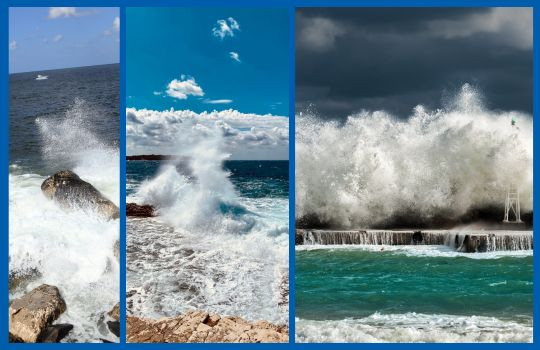09.08.2023.
Key Adriatic winds like the Bora, Sirocco, and Mistral, each with distinct characteristics, profoundly influence sailing conditions. Learning their traits and their corresponding sailing strategies is essential. These winds also have a strong influence on local people and are deeply important in Croatian seafaring culture.
The winds of the Adriatic are not mere natural phenomena; they are vital navigational tools. At times, they are also formidable forces to reckon with.
So, if you plan to sail in Croatia, it's paramount to grasp their characteristics (and quirks) to ensure smooth sailing.
The Adriatic Sea has a lot of weather patterns. One may say the Adriatic dances to its own meteorological rhythm dictated by geography.
Yet, as the calendar pages turn and seasons transition, the Adriatic's wind patterns are as distinct as the season it represents.

Key Adriatic winds: introduction to Sirocco, Mistral and Bora
The wind guides sailors with the unseen hand, helping and sometimes hindering them. Let's get acquainted with the principal Adriatic winds: the Bora, Sirocco, and Mistral.
Sirocco (/sɪˈrɒkoʊ/, Croatian: Jugo /ˈjuːɡoʊ/)
The Jugo, also known as the Sirocco, is a distinctive wind experienced in the Adriatic Sea. Originating from the Sahara Desert, this southeast wind carries warmth and aridity across the Mediterranean. When it reaches the Adriatic, it often brings higher temperatures and a noticeable increase in humidity, starkly contrasting the cold, dry Bora wind.
This wind can sometimes carry fine desert sands, causing the sky to take on a hazy, dusty appearance. For sailors, the Jugo can pose challenges due to the rough sea conditions it can cause. Still, it's an essential part of the Adriatic's unique climate.
Jugo is usually a bit less intense than Bora. Average speeds are generally around 50 km/h (31 mph). Exceptionally strong gusts can reach approximately 100 km/h (62 mph).
Jugo, in general, leaves a lot to be desired. Its biometeorological conditions are truly unfavourable, often bringing "bad moods" and all kinds of aches. It's said that in the old Dubrovnik republic, any crime committed during Jugo would be treated more mildly than under "normal" weather conditions.
Mistral: /mɪˈstrɑːl/, Croatian: Maestral /maɪˈstrɑːl/
The Mistral is a quintessential Mediterranean wind of the Adriatic Sea, typically originating from the northwest. It is a dry, cool, and usually clear weather wind, which often brings relief during the warm summer months.
This wind is frequently associated with high atmospheric pressure conditions. It is most common during the transition between a low-pressure system and a high-pressure one. The Mistral can be a favourable wind for sailors, often associated with good sailing conditions due to its predictability and consistency.
The Mistral's speed varies greatly depending on the area and the season. Still, it's usually less intense in the Adriatic compared to regions like the Gulf of Lion in France or Spain. On average, it can reach about 40-60 km/h (25-37 mph). The highest speeds in more exposed areas can reach more than 180km/h (112 mph).
People of Provence in France used to build their house doors on the south side to avoid gusts of Mistral. But it also is the reason for the area's sunny climate, so its "guilty" for Provance's great vines and beautiful lavender fields. Local legends, as they usually do, say that Mistral also brings changes in behaviour and mood, especially with babies and toddlers.
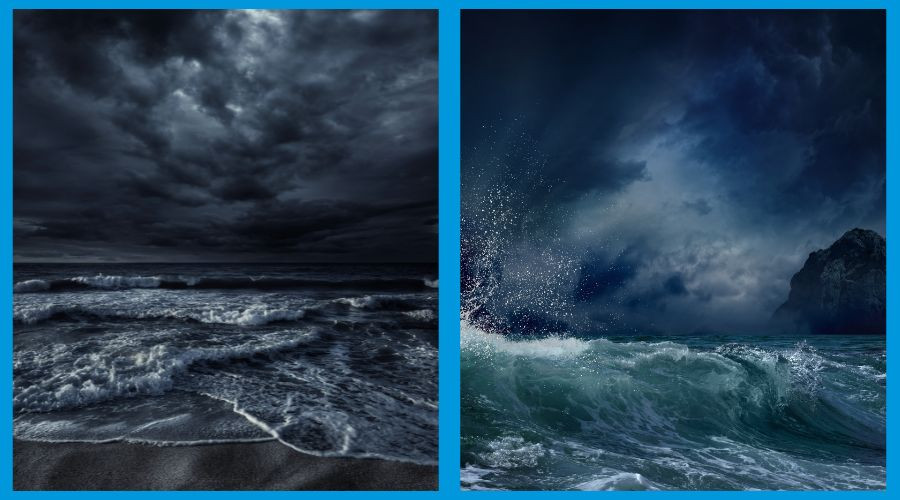
Bora (/ˈbɔːrə/, Croatian: Bura /ˈbuːrɑ/)
The Bora, or Bura, is a remarkable wind that sweeps across the Adriatic Sea from the northeast. A cold, dry wind, it's shaped by the unique geographical features of the area, is the strongest in the Velebit mountain area.
Known for its gusty nature, Bora can reach impressive speeds, making it a formidable force for sailors. It's created due to the temperature difference between the land and sea, especially during colder months.
Despite its challenges, it's also a cleansing wind, bringing clear weather and incredible visibility, making the Adriatic's landscapes truly stand out in all their glory.
The average speed of Bora can range from about 35 km/h (22 mph) to 100 km/h (62 mph). However, in extreme cases, gusts have been recorded to reach up to around 250 km/h (155 mph), making it one of the strongest coastal winds on Earth.
Local legends say that Bura was created a long time ago when immortal fairies inhabited these areas. At the time, there was a local girl who prided herself overly on her own beauty and renounced all the suitors. When she became so haughty that she compared herself to the fairies themselves, she was punished and cast to Hell. Today, whenever a woman makes the same hubris, the punished woman sighs, remembering her own sin. And her sighs of remembrance create Bura, a strong cold wind.
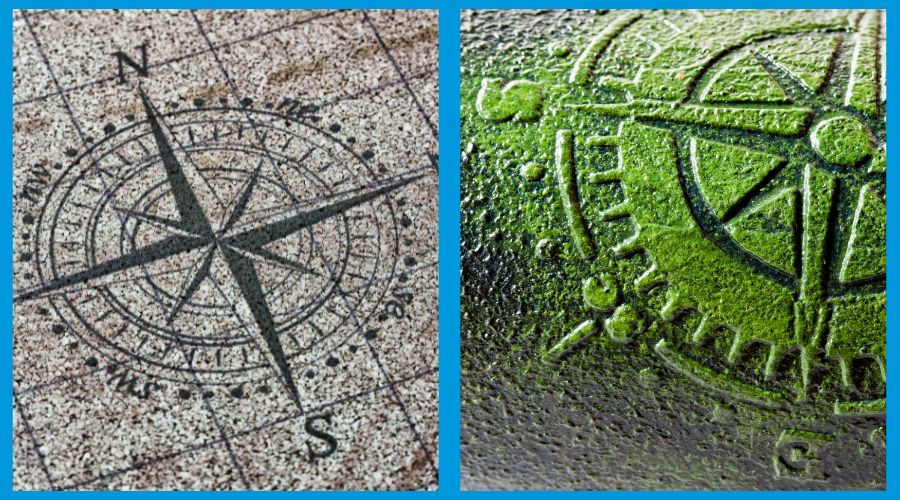
Tips and techniques on how to read the Adriatic winds
Understanding the Adriatic winds can be both an art and a science. Knowledge of local weather patterns and meteorology certainly helps. Still, seasoned sailors know that experience and intuition also play a huge role.
Observing the sky and the sea, understanding wind direction, and tuning into the smells, sounds, and sensations of changing winds are crucial skills.
The Bora, a powerful wind, typically blows from the northeast. Meanwhile, a hazy, dust-filled sky often signals the Sirocco (Jugo), which usually originates from the southeast, carrying warmth and moisture from the Sahara.
On the other hand, the Mistral, known for causing calmer waters, blows from the northwest, bringing cooler, drier air.
The Adriatic winds also affect the sea's behaviour. Rough, choppy waves might announce a Bora or Sirocco, while calmer waters could suggest the presence of the Mistral.
The sensory experience can also provide valuable insights. The Bora carries a crisp, cold scent, while the Sirocco might bring a faint smell of dust and desert. The shift in temperature, the change in humidity, even the sounds – all are part of the language of the Adriatic winds.
If all other methods fail, modern technology remains. Wind prediction tools and apps can be incredibly helpful and can enhance your understanding of the Adriatic wind's unique patterns.
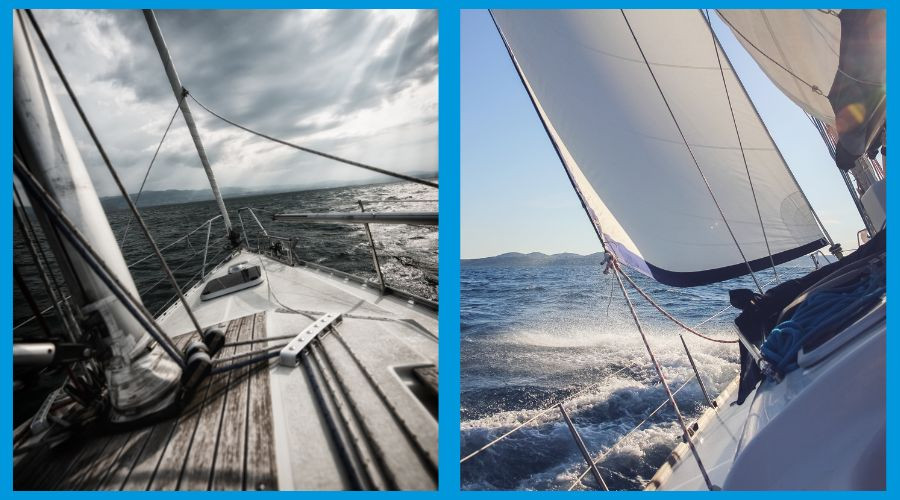
Navigating the winds: safe and strategic sailing in the Adriatic
Navigating the Adriatic winds calls for knowledge, skill, and strategic decision-making. Sailing in the Adriatic, one must be aware of the Bora, Sirocco, and Mistral, each bringing unique conditions.
Sailing during the Bora, a mighty wind blowing from the northeast, can be challenging due to its gusty, unpredictable nature. Its approach often leads to choppy seas and requires sailors to secure all loose items onboard, reduce sail area promptly, and maintain safety. Locals know it best – they will advise you not to go sailing and go nowhere near your vessel when Bora is approaching.
The Sirocco, or Jugo, originating from the southeast, carries warmer, moisture-laden air and can stir up rough sea conditions. Sailing in a Sirocco often requires adjusting course to maintain comfort and control, keeping a vigilant watch for other vessels that may be struggling in the conditions, and regularly checking the bilges as the long-period waves may result in more water on deck. However, it's advisable to look for a safe port or anchorage during the stronger gusts.
The Mistral, blowing from the northwest, is generally a welcome wind in the hot summers, as it cools the air and brings good visibility. It's perfect for leisurely sailing, but don't be fooled - it can still catch you out with sudden gusts, especially near the coast.
We advise you to use weather forecasts, constantly monitor your surroundings, and adjust your plans accordingly. It is vital to a safe and enjoyable sailing experience.
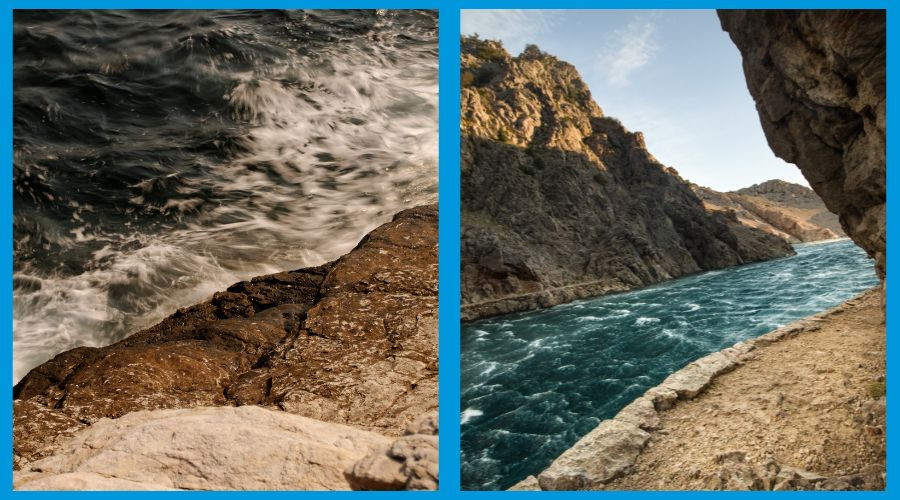
Local seafaring culture of Adriatic winds
The Adriatic Sea has shaped local seafaring culture in profound ways. Here, understanding wind isn't just technical knowledge - it's part of the local wisdom passed down through generations.
The Bora, Sirocco, and Mistral aren't merely winds; they're entities with their own personalities, woven into the fabric of Croatian maritime folklore.
Croatian sailors know that the Adriatic doesn't reveal its secrets easily. It beckons you to a continuous learning process.
Every sail, every encounter with the Bora, the warm Sirocco, or the calming Mistral teaches you something new, honing your skills and refining your instincts.
The ability to adapt to ever-changing conditions; it's a philosophy of life in the area. And there is also a local "philosophy" that goes: "The boat is moored in nice weather".
In short, this would mean that the locals usually make sure their vessels are safe and secure before any storm or strong winds.
The Adriatic winds can change course, intensity, and even character, all within the same day. A wise sailor learns to "dance" with it rather than resist it.


